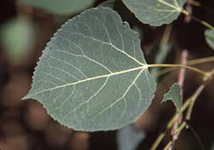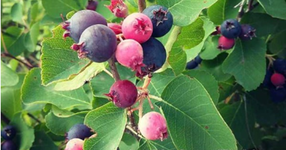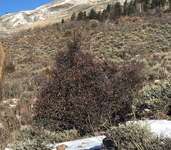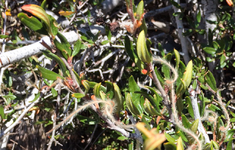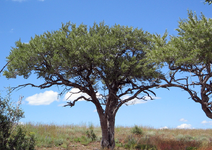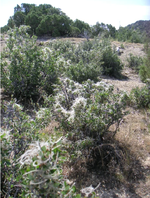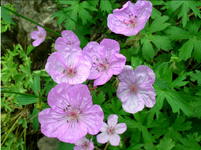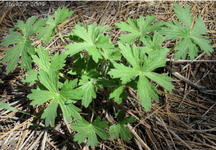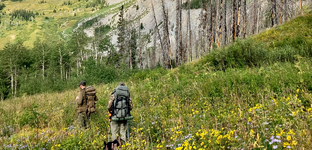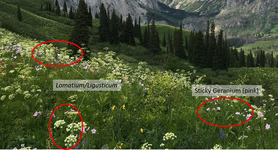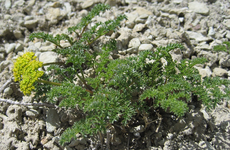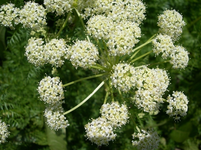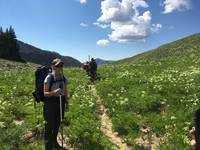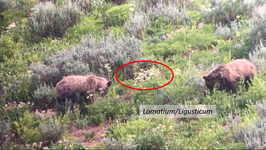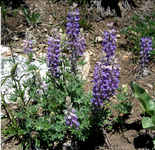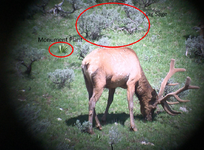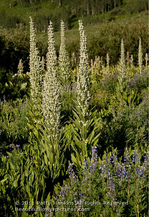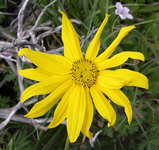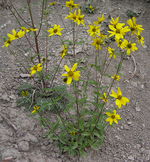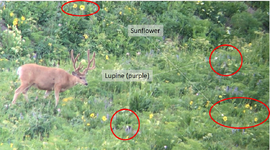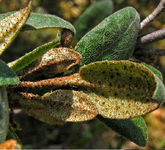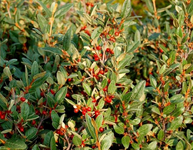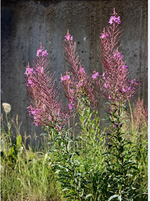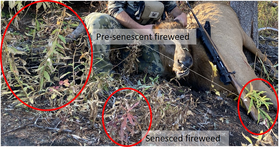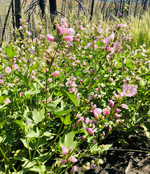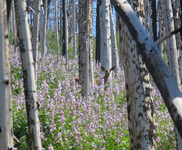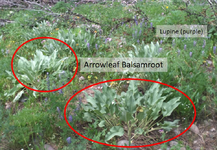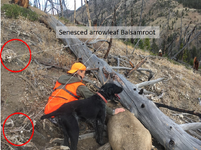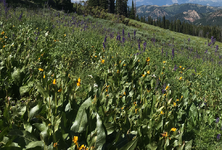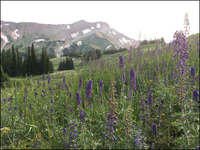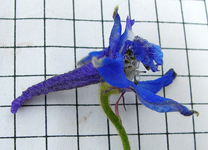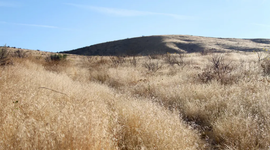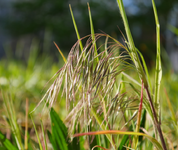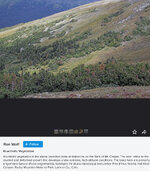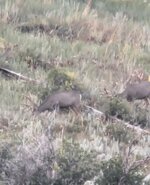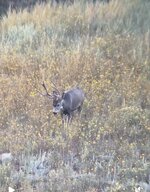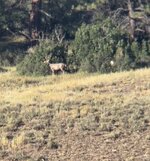Bull_n_heat
WKR
This thread goes hand in glove with a Rokcast recording that Robby and Luke did in February 2025 (link to that episode is here). Hopefully this pictorial is helpful for giving visuals of the plants discussed there, but definitely go check it out for a bunch of background info on when and why deer will use these plants. There’s some great tidbits in there about identifying these plants/communities from afar (e-scouting, or through-the-glass) as well as information about how to help make deer habitat all that it can be.
1. Big Sage Brush (Artemesia tridentata)
These are nearly ubiquitous across much of the West. Small, “bushy” shrub that appears generally light green, or blue-ish green in color. Leaves are evergreen (non-deciduous) and have three lobes to them (hence TRI-dentata). Three subspecies: Wyoming big sage (mid- to low-elevation), basin big sage (lower areas, bottoms of draws), and mountain big sage (higher elevation).
 www.wildflower.org
www.wildflower.org
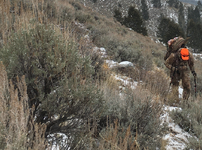
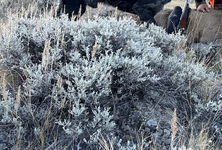
2. Antelope Bitterbrush
Very valuable browse species for most ungulates where available. Deciduous shrub that is similar in stature and usually associated with big sage (top photo), but has deeper green leaves and yellow flowers. In late fall/winter (after the leaves fall off) the stems appear more red/brown or darker than the greyer stems on a big sage plant.

 extension.oregonstate.edu
extension.oregonstate.edu
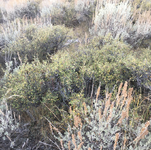
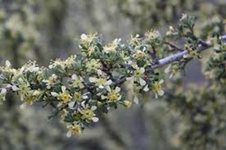
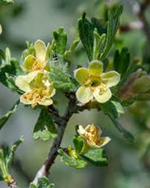
3. Oak Brush (Gambel Oak)
The nice thing about this shrub is that you really shouldn’t have to pick out just one of them – it should basically cover whole hillsides (first photo). If you’re an easterner where there are oak trees, it should look pretty similar, except it suffers from dwarfism. It can grow up to ~30’ in height and is generally pretty thick. It will have round-lobed leaves that are 3-5” long and turn gold/brown in the fall, often being one of the last deciduous trees to shed its leaves. In growth, the shrub tends to have a pretty “gnarly”, crooked branches and trunks that splay in many directions. It is excellent escape cover, produces high value acorns, and is pretty good browse. If you hunt north of Idaho or Wyoming, you can pretty much write this one off, but if you’re south of there, you’d best know this one.'
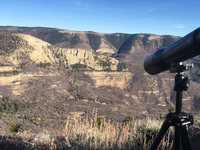
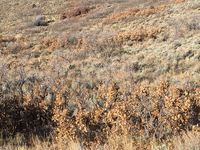
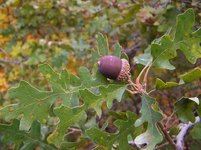
4. Quaking (or “Trembling”) Aspen – “the Quakies”
This is one of the iconic trees of the West. It is actually the widest distributed tree in North America, and the largest living organism on Earth is actually a clonal group in southern Utah. Light, straight stems with light green leaves typify Aspen in the summer (top photo), which turn gold or orange in the fall (second Photo). The narrow leaf stem that attaches to the bud (last photo) causes the leaves to “tremble” or “quake” in the slightest of breezes, inspiring its name. Because of this, the splendor of their autumnal color is unfortunately short lived. Aspen provide excellent escape cover, wonderful browse, but, perhaps most importantly, create excellent growing conditions in their understory that produces a great bounty of diverse foods for deer. I have read in places that aspen are particularly nutritionally valuable in the fall because freezing does something chemically in their leaves, but also because their browse (woody material) has more protein content following leaf-off (which is typical of almost every shrub).
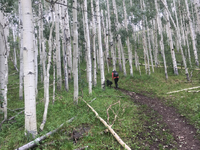
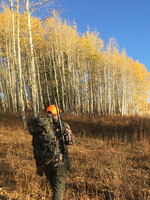
1. Big Sage Brush (Artemesia tridentata)
These are nearly ubiquitous across much of the West. Small, “bushy” shrub that appears generally light green, or blue-ish green in color. Leaves are evergreen (non-deciduous) and have three lobes to them (hence TRI-dentata). Three subspecies: Wyoming big sage (mid- to low-elevation), basin big sage (lower areas, bottoms of draws), and mountain big sage (higher elevation).
Lady Bird Johnson Wildflower Center - The University of Texas at Austin


2. Antelope Bitterbrush
Very valuable browse species for most ungulates where available. Deciduous shrub that is similar in stature and usually associated with big sage (top photo), but has deeper green leaves and yellow flowers. In late fall/winter (after the leaves fall off) the stems appear more red/brown or darker than the greyer stems on a big sage plant.

Antelope bitterbrush, Purshia tridentata
A description of the seasonal development of the antelope bitterbrush shrub (Purshia tridentata), from young leaves and flowers to fruits and seeds.



3. Oak Brush (Gambel Oak)
The nice thing about this shrub is that you really shouldn’t have to pick out just one of them – it should basically cover whole hillsides (first photo). If you’re an easterner where there are oak trees, it should look pretty similar, except it suffers from dwarfism. It can grow up to ~30’ in height and is generally pretty thick. It will have round-lobed leaves that are 3-5” long and turn gold/brown in the fall, often being one of the last deciduous trees to shed its leaves. In growth, the shrub tends to have a pretty “gnarly”, crooked branches and trunks that splay in many directions. It is excellent escape cover, produces high value acorns, and is pretty good browse. If you hunt north of Idaho or Wyoming, you can pretty much write this one off, but if you’re south of there, you’d best know this one.'



4. Quaking (or “Trembling”) Aspen – “the Quakies”
This is one of the iconic trees of the West. It is actually the widest distributed tree in North America, and the largest living organism on Earth is actually a clonal group in southern Utah. Light, straight stems with light green leaves typify Aspen in the summer (top photo), which turn gold or orange in the fall (second Photo). The narrow leaf stem that attaches to the bud (last photo) causes the leaves to “tremble” or “quake” in the slightest of breezes, inspiring its name. Because of this, the splendor of their autumnal color is unfortunately short lived. Aspen provide excellent escape cover, wonderful browse, but, perhaps most importantly, create excellent growing conditions in their understory that produces a great bounty of diverse foods for deer. I have read in places that aspen are particularly nutritionally valuable in the fall because freezing does something chemically in their leaves, but also because their browse (woody material) has more protein content following leaf-off (which is typical of almost every shrub).



